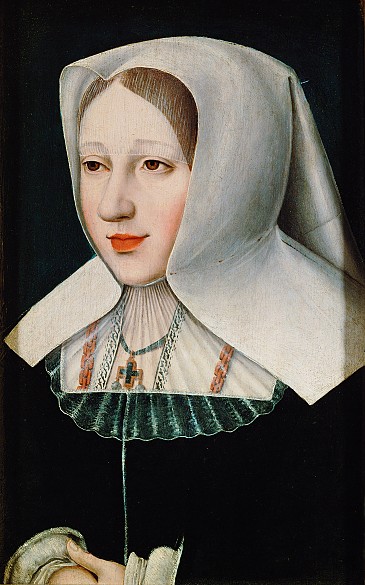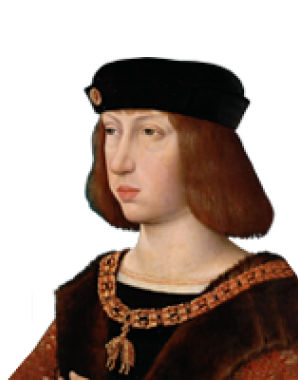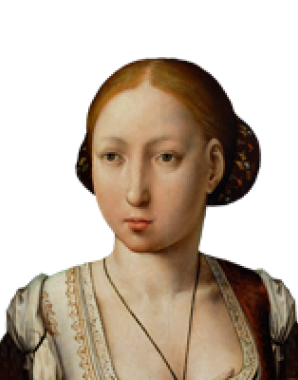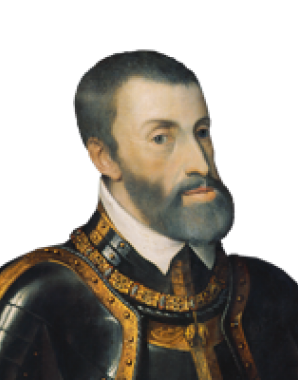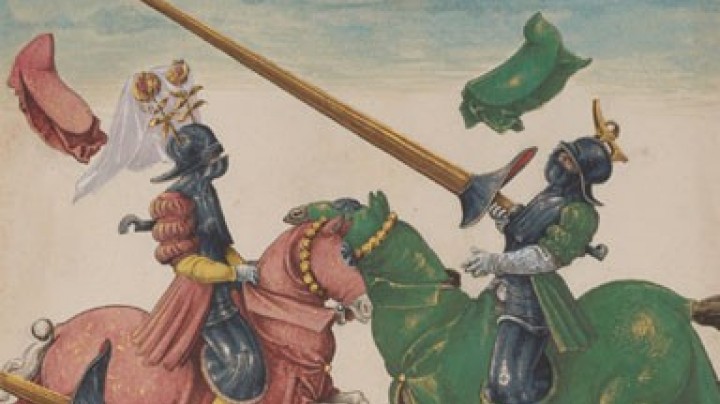Margaret of Austria: a life dedicated to the higher honour of the dynasty
Margaret was a daughter of Maximilian I and Mary of Burgundy. Her high birth made her an object of dynastic policy from infancy.
Her father Maximilian was anxious to secure for the House of Habsburg the rich Burgundian inheritance that had passed to him after the death of the last Duke of Burgundy, Charles the Bold, thanks to his marriage to the latter’s daughter and sole heir in 1477.
After Mary’s death in 1482 the Burgundian Estates claimed guardianship over Margaret and her brother Philip. Before she had reached the age of three the little girl was promised to Charles, heir to the French throne and son of King Louis XI. Margaret’s betrothal set the seal on the cession of a number of Burgundian territories which had been claimed and occupied by France since 1477. (These included ‘Old Burgundy’, the duchy of Burgundy with Dijon in eastern France, together with the county of Artois and the Franche Comté of Burgundy, both of which lay within the Holy Roman Empire.) These territories were now finally being ceded to France as the price for recognizing Maximilian as ruler over the Burgundian domains in the Low Countries.
The little girl was taken to France, where she spent the rest of her childhood at the French court. However, the betrothal was dissolved in 1491 when the dauphin Charles married the wealthy heiress Anne of Bretagne, who had previously been promised to Margaret’s father Maximilian. For Maximilian this was a humiliating personal defeat.
In 1493 Margaret, now aged thirteen, was formally handed back to the Netherlands, but France withheld her dowry, the territories that had formerly belonged to Burgundy. This set Maximilian on a decidedly anti-French course.
Margaret now once again became the object of dynastic schemes. When Charles VIII of France attempted to extend his power basis in Italy and attacked Naples, which belonged to the sphere of influence of King Ferdinand of Aragon, Maximilian concluded an anti-French alliance with the latter, an agreement that was sealed with a double wedding. Maximilian’s children, Philip the Fair and Margaret, were married to the children of Ferdinand and Isabella, Joan and John, the future heirs of the kingdoms of Castile and Aragon. In 1496 Margaret was sent by ship to join her new husband, who was three years her senior. The marriage did not last long: the sickly infante of Spain died after only six months – allegedly of exhaustion from the strain of performing his marital duties. Margaret had become pregnant, but the child was stillborn.
The young widow returned to the Netherlands in 1499 and by 1501 was once again the object of a dynastic union. This time her husband was Duke Philibert of Savoy, whose realm played a decisive role in the rivalry between France and the Habsburgs in Italy on account of its strategic position in the Western Alps. This extremely happy union was however also to be of only brief duration. By 1504, aged only twenty-four, Margaret was again a widow. After this she refused to marry again.
In 1507 Margaret was installed as governor of the Netherlands by her father following the death of her brother Philip. She made her residence in Mechlin, where she oversaw the upbringing of her nephew Charles and her nieces Eleonora, Isabella and Maria, who were now half-orphans. The children’s mother, Joan the Mad, was considered to be mentally disturbed and the children had been removed from her care.
Margaret’s governorship coincided with a period of prosperity and cultural flowering in the Netherlands. Extremely intelligent and politically gifted, she represented the interests of the Netherlandish provinces, sometimes in opposition to her father Maximilian and later her nephew Charles. Her diplomatic masterstroke was the ‘Ladies’ Peace’ of Cambrai (1529), which placed relations between Francis I of France and Charles V on a stable basis in the wake of the conflicts over the Burgundian and Italian territories.
